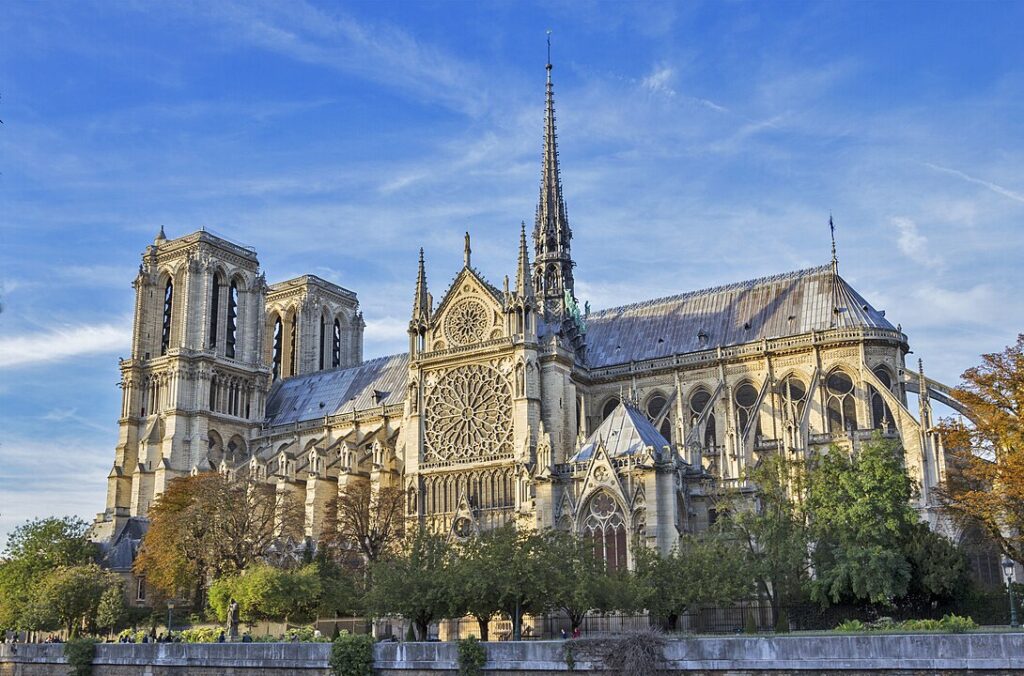In the fifteenth century everything changed. Human intelligence discovered a way of perpetuating itself, one not only more durable and more resistant than architecture, but also simpler and easier. Architecture was dethroned. The stone letters of Orpheus gave way to the lead letters of Gutenberg. The book will kill the edifice.
~ Victor Hugo
MEDIA NARRATIVE
In his 1831 novel The Hunchback of Notre Dame, Victor Hugo asserted that with the invention of the printing press the printed word would replace the cultural role of architecture. Although Hugo did not make an explicit statement that this was a positive or negative development, he did explicitly advocate for the preservation of cultural monuments like Notre Dame Cathedral because it was unlikely that buildings of such significance would be built in the future.
Although “media” did not exist when Victor Hugo made his declaration, a serious consideration of his assertion should affect the architecture we build today, how we capture architecture in today’s media, and what part the media’s portrayal of architecture plays in determining architecture’s societal role. Although Hugo was concerned with print in his time, the current video, internet, and social media make his assertions even more important to consider. Has digital media now replaced print as Hugo asserted print replaced architecture?
Architecture serves many functional purposes, but it is its societal roles that we must consider in relation to the printed word and media. Hugo contended that whoever was born a poet became an architect as prior to the printing press, architecture was the chief way societies communicated ideas and transmitted societies’ shared values from generation to generation.
Architecture once had an inherent physical and cultural permanence that lasted many generations and was built by and housed institutions that also strove for generation to generation permanence. It was once not uncommon for a building that aspired to architecture to take multiple generations to complete, and buildings were once the way to make ideas and values manifest to the widest audience.
Architecture is inherently a group effort expending immense resources, and thus a certain amount of agreement within the community is necessary to make a building a reality. Thus, architecture was and is at its most powerful when defending a community’s commonly held values. Architecture works best when practiced as a conservative art, not a revolutionary art of self-expression.
The printing press made the printed word a much faster, cheaper, and efficient method to communicate ideas and values, and the printing press made it possible to reach a much wider audience than architecture could ever accomplish. It simply became less effort and more efficient to perpetuate ideas and values in print than through architecture.
Photography and communication media developed since the printing press have only increased the difference in speed, cost, and audience between using printing or media and using architecture to promulgate ideas and values. But equally significant to printing and media replacing architecture as the prime method of disseminating ideas and values is that printing and especially media makes it possible for personally held ideas and values to permeate the public realm, displacing collectively held values.
Unlike architecture, writing, printing, and social media (as most fine arts) are not inherently a collective activity expending sufficient resources that provide an inherent communal filter editing the values celebrated in public. Writing, printing, social media, and reading are most often an individual endeavor requiring very little resource expenditure and thus allow and often tend toward self-expression. Contrary to architecture’s expression of shared values, printing allows the easy spread of challenges to shared values, revolutionary ideas are easily disseminated to a very wide and diverse audience. The ideas and values expressed in writing and on the internet have an infinite shelf life that can be continuously replenished.
Architecture is made of one-of-a-kind constructions that must be continuously maintained in order to last even a single generation. Architecture is tied to its location and time while printed and posted materials have neither limitation. So, in a world where there are fewer and fewer commonly held values and buildings cost more and more to build, does it make sense to attempt perpetuating values through architecture? And more specifically, does it make sense to attempt perpetuating values through residential architecture when the number directly experiencing the architecture is limited? Or does the exposure of architecture through media make residential architecture potentially as public and as significant as traditionally understood public architecture?
More Coming Soon More Coming Soon More Coming Soon More Coming Soon More Coming Soon More Coming Soon More Coming Soon More Coming Soon More Coming Soon
…architecture will never be the social, collective, dominant art it was. The great poem, the great structure, the great masterwork of humanity will never again be built; it will be printed.
~ Victor Hugo
